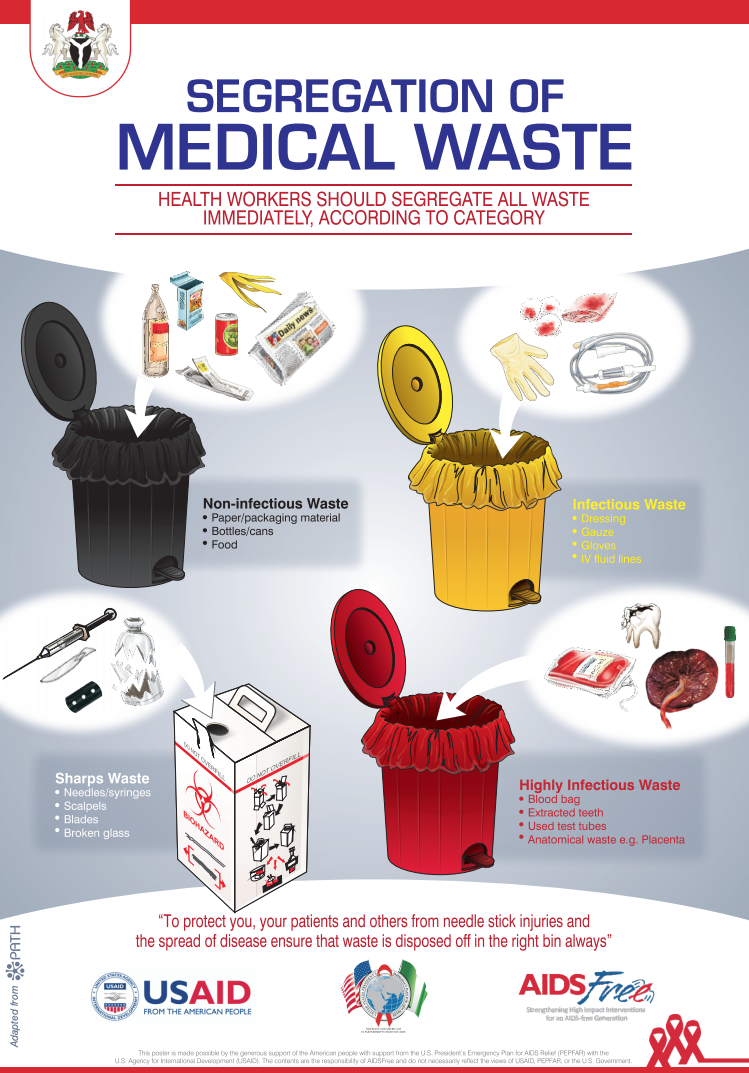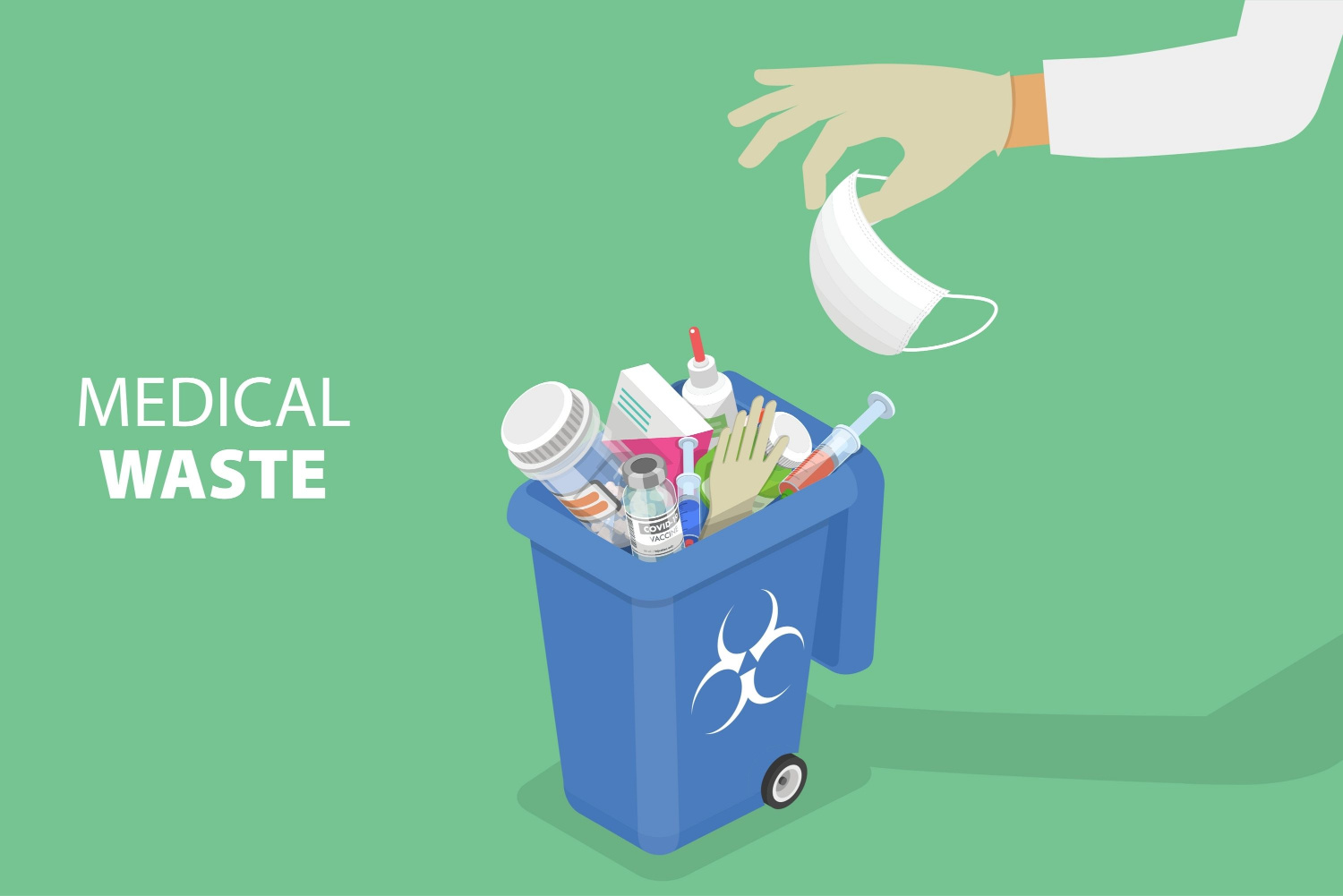Efficient and Liable Medical Waste Removal: Protecting People and the Earth
Wiki Article
Efficient Approaches of Medical Waste Disposal
Reliable techniques of clinical waste disposal are crucial in keeping public wellness and ecological security. Clinical waste, including sharps, pathological waste, and pharmaceutical waste, should be taken care of and taken care of properly to avoid the spread of infections and secure the setting. This calls for adherence to stringent laws and the execution of expert waste monitoring techniques.Appropriate partition of medical waste, risk-free and safe and secure storage, efficient therapy and disinfection techniques, and environmentally-friendly disposal options are key parts of a reliable medical garbage disposal system. Professional waste administration solutions play an essential role in making sure conformity with guidelines and lessening the dangers connected with incorrect disposal. By utilizing these methods, healthcare centers can contribute to a more secure and cleaner environment while securing the well-being of the community.
Correct Segregation of Clinical Waste
Proper segregation of medical waste is important for making sure the safe and effective disposal of these possibly hazardous materials. Medical waste refers to any waste produced during health care activities, such as hospitals, clinics, laboratories, and research study facilities. It consists of a vast array of materials, such as used needles, syringes, contaminated dressings, expired or extra medicines, and organic products.By setting apart medical waste, medical care centers can decrease the threat of infections, injuries, and environmental contamination. The procedure involves classifying waste right into various kinds, such as sharps, infectious waste, pharmaceutical waste, and non-hazardous waste. Each type calls for certain handling, packaging, and disposal techniques to stop exposure to healthcare employees, waste administration employees, and the public.
To make certain correct segregation, healthcare centers should create clear guidelines and supply sufficient training to employee. This includes enlightening employees on the various waste groups, appropriate product packaging methods, and the use of appropriate containers - WasteX Medical Waste Disposal. Additionally, clear signage and color-coding systems can be applied to promote the recognition and segregation of various waste kinds
Safe and Secure Storage of Medical Waste
Safe and safe storage space of medical waste is vital for maintaining the stability and control of potentially hazardous materials. Proper storage space not only safeguards medical care workers and the public from direct exposure to dangerous substances yet also avoids environmental contamination.To make certain safe storage space, clinical facilities must adhere to particular standards. Waste needs to be stored in watertight and puncture-resistant containers that are identified suitably - medical waste disposal service.
Proper segregation of clinical waste is additionally crucial for secure storage space. Various kinds of waste, such as sharps, infectious products, and pharmaceutical waste, should be divided to avoid cross-contamination. This segregation can be attained via using color-coded containers or containers.
Routine tracking and assessment of the storage location are crucial to identify any kind of potential dangers or breaches. This consists of monitoring for signs of damage or degeneration in the containers, ensuring appropriate ventilation, and keeping an eye on temperature level and humidity levels.
Effective Therapy and Sanitation Approaches

One frequently used treatment method is autoclaving, which entails subjecting the waste to high-pressure heavy steam at temperature levels over 121 levels Celsius. This procedure properly eliminates microbes and destroys contagious representatives, rendering the waste secure for further disposal. An additional approach is incineration, which involves melting the waste at heats. Incineration not just removes bacteria but additionally decreases the waste quantity with combustion.
Chemical sanitation is another effective technique for treating medical waste. This approach includes utilizing disinfectants such as chlorine substances, phenolic compounds, or hydrogen peroxide to kill or inactivate microorganisms (WasteX Medical Waste Disposal). Chemical disinfection is often used for fluid waste, such as research laboratory examples or physical fluids
Over the last few years, alternative treatment methods such as microwave sanitation, irradiation, and biological therapy have likewise gained focus. These techniques offer benefits such as minimized environmental effect and energy consumption contrasted to traditional approaches.
Environmentally-friendly Disposal Options
In the world of clinical waste disposal, taking into consideration environmentally-friendly alternatives is essential. Medical care centers produce a substantial quantity of waste, consisting of contagious products, drugs, and chemicals, which can posture major risks to human health and the atmosphere if not taken care of correctly. Thankfully, there are several environmentally-friendly disposal choices offered that can help minimize these risks.
Reusing clinical waste involves setting apart and processing certain materials for reuse or repurposing. In addition, some healthcare centers have applied reusing programs for certain clinical gadgets or equipment, more reducing waste generation.
This method entails transforming clinical waste into power via procedures like incineration or anaerobic digestion. Anaerobic food digestion, on the other hand, breaks down organic waste in the absence of oxygen, generating biogas that can be used for electrical power or heat generation.

Advantages of Professional Waste Management Solutions
One considerable advantage of specialist waste administration services is the enhanced effectiveness in getting rid of and handling of clinical waste. Health care facilities produce a considerable amount of waste that consists of dangerous products, such as sharp items, polluted things, and potentially transmittable waste. medical waste removal. Incorrect handling and disposal of clinical waste posture serious wellness risks to staff members, patients, and the public. By utilizing expert waste management services, healthcare facilities can make sure that all medical waste is taken care of and thrown away effectively, reducing the threat of contamination and the spread of conditions.Professional waste management services use qualified and knowledgeable workers look at here now who are knowledgeable regarding the guidelines and guidelines for medical garbage disposal. They have accessibility to specialized tools and devices that enable them to handle different kinds of medical waste safely and effectively. These services likewise have reputable procedures and methods in location to ensure that waste is segregated, packaged, moved, and disposed of in conformity with regional, state, and federal laws.
Additionally, expert waste administration solutions can provide health care centers with comprehensive waste management options. They can offer services such as waste collection, treatment, transport, and disposal, tailored to the particular requirements and needs of the facility. This gets rid of the worry of managing waste internally, enabling healthcare team to concentrate on providing top quality patient care.
Final Thought
In conclusion, effective techniques of medical waste disposal entail correct segregation, safe storage, treatment and disinfection, and environmentally-friendly disposal options. These methods guarantee the risk-free handling and monitoring of medical waste, avoiding the spread of infections and shielding the setting.Clinical waste, consisting of sharps, pathological waste, and pharmaceutical waste, must be taken care of and disposed of properly to stop the spread of infections and safeguard the environment.Appropriate partition of clinical waste, safe and safe storage space, effective therapy and disinfection methods, and environmentally-friendly disposal options are vital parts of an effective clinical waste disposal system. The process entails categorizing waste into various types, such as sharps, transmittable waste, pharmaceutical waste, and non-hazardous waste. By using expert waste management solutions, medical care centers can guarantee that all clinical waste is handled and disposed of correctly, lessening the danger of contamination and the spread of illness.
Professional waste administration services use seasoned and experienced workers who are knowledgeable regarding the laws and guidelines for medical waste disposal.
Report this wiki page